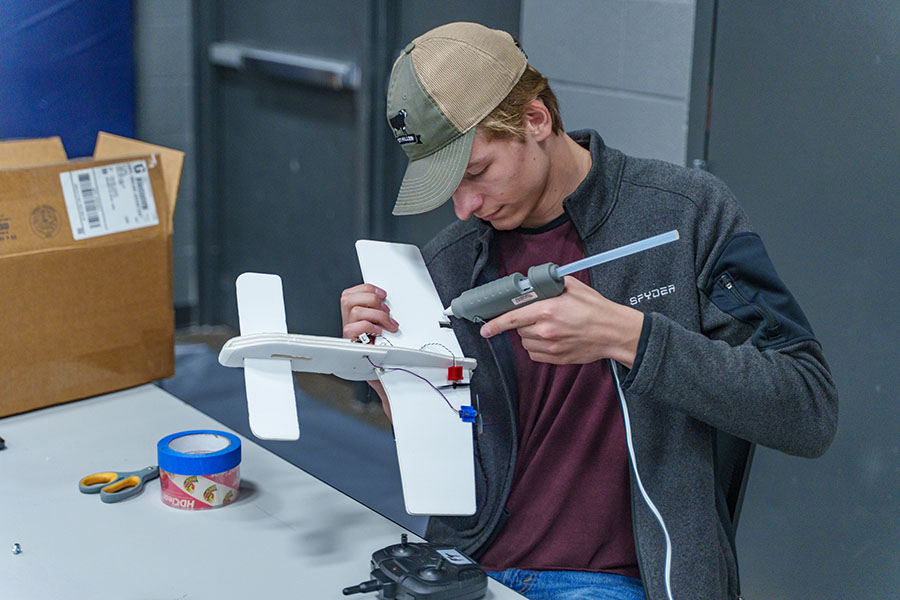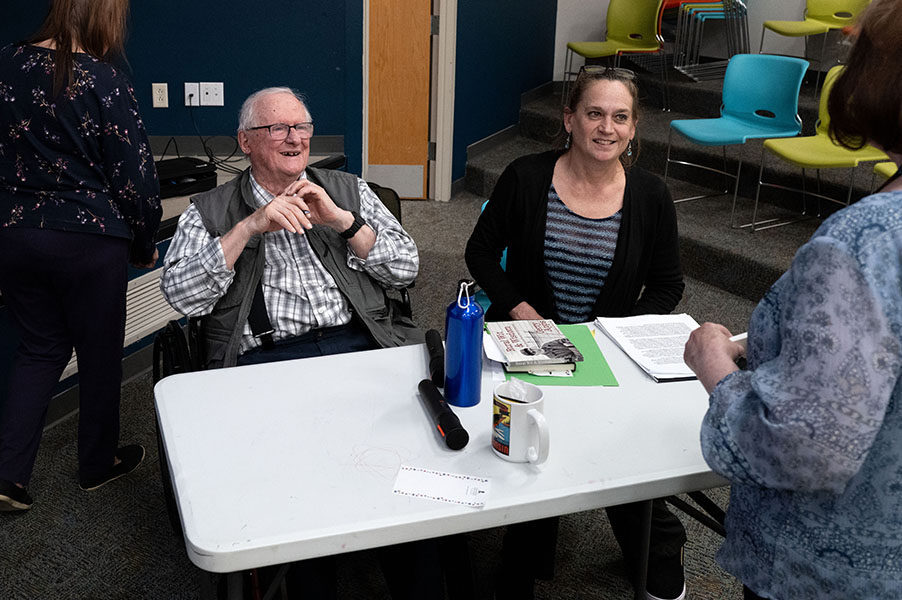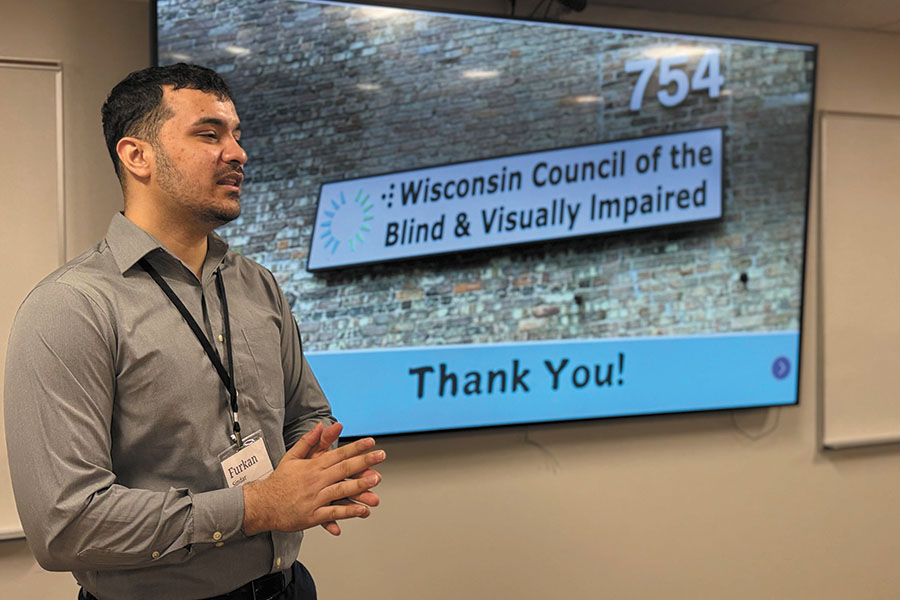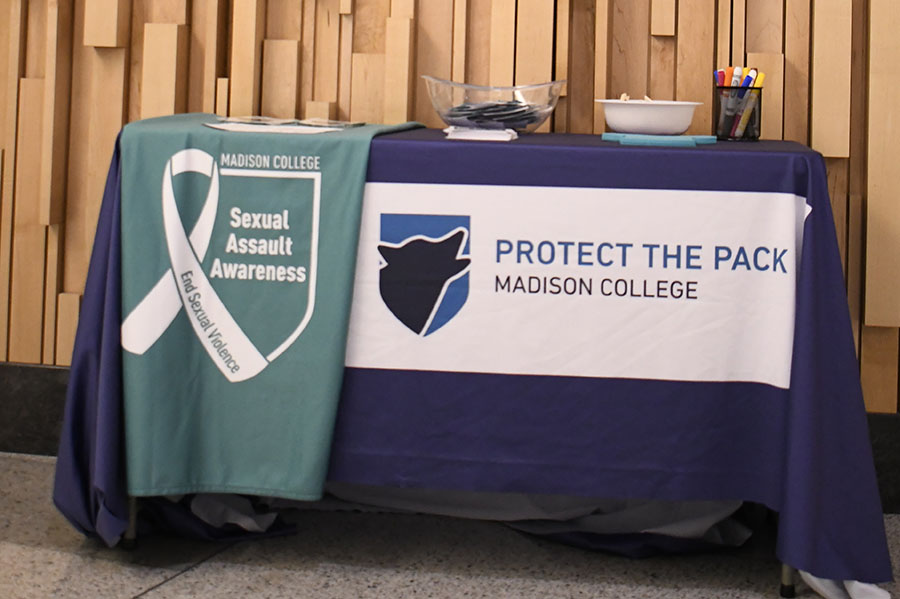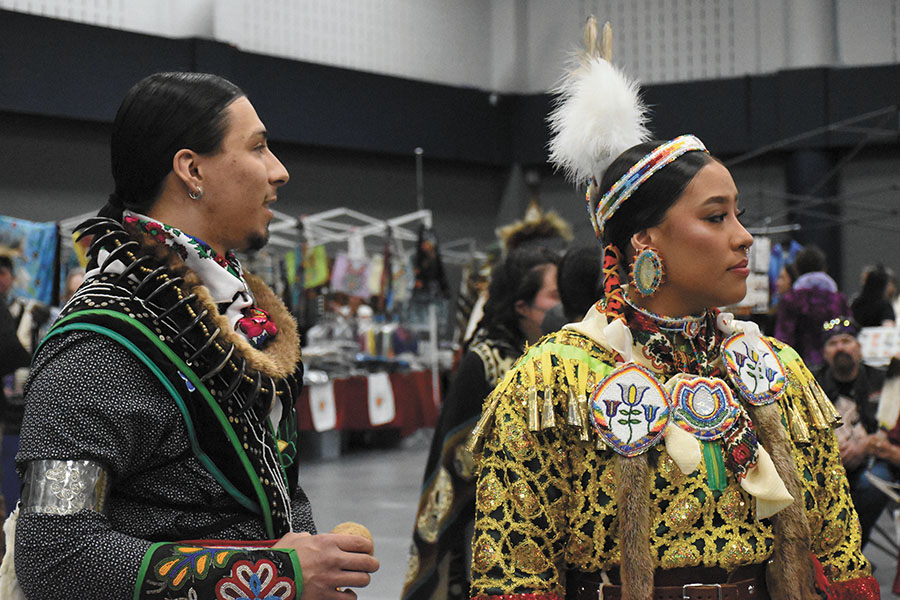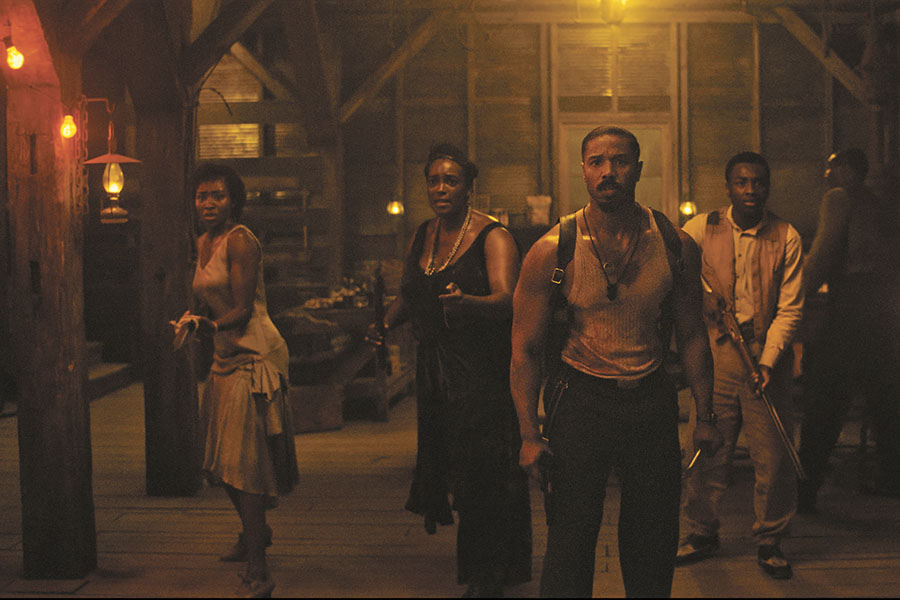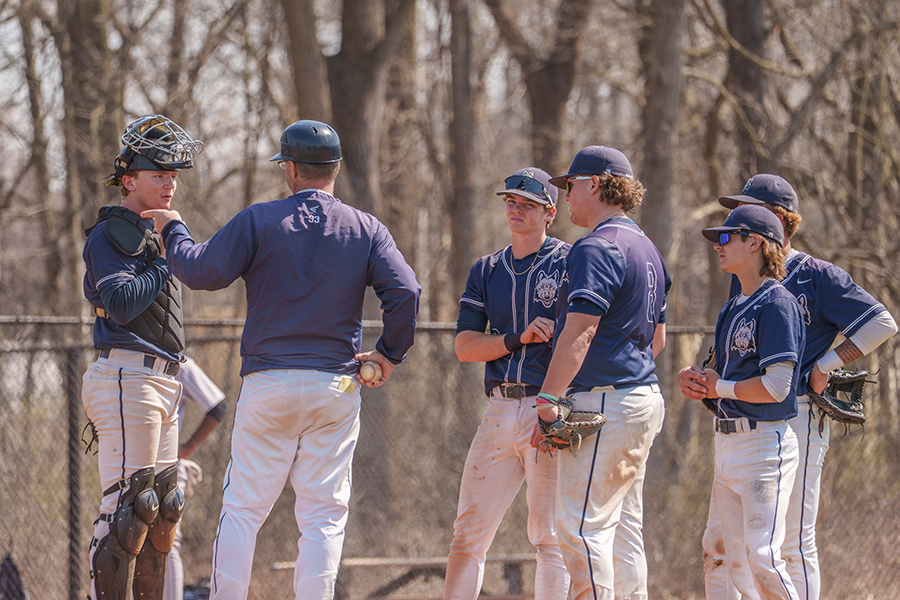It was dark and cramped inside a deep crevice of Popp’s Cave. In the flashlight orb, a jumble of rough letters was scratched into the surface of the rock.
“THE END,” said the engraving, and there the passage ceased at the edge of an impenetrable rock pile.
Popp’s Cave isn’t an average cave, the kind where an arch cuts right into a wall of sheer stone. Popp’s Cave is much different, and is an interesting geographical feature caused thousands of years ago by glacier deposits from the last ice age.
Popp’s Cave opens at the top of a tall hill in nearby Richland County, which students reached from Truax campus in a Center for Student Life van driven by Serge Bamana, a student who helped facilitate the cave exploration. Ciara Hill, and Dillon Wright joined him in organizing and leadership.
The hill with Popp’s Cave is set among many other hills, all covered by trees that turn dark brown and bright orange when they fall in the autumn. The gold hues and dark reds mix together, and their colors carpet the steep hillsides, along which a narrow trail winds upwards towards the summit. At the top is where Popp’s Cave begins, and its entrance drops downwards towards the center of the hill, as if a massive drill was long ago driven down into the soil. Lolita Phillips, the boisterous eldest of the group, joked continually as she hiked steeply up the hill, then steeply down into the cave. Her humor kept everyone laughing while we explored alongside her.
Inside the cave, after a brief scale down the opening’s side, everyone ignited their flashlights. There, the large chamber narrows into another passageway at the far end of the room, but darkness and fragmented rock piles slick with mud make the way difficult to cross. It took time to move small distances. The going becomes more difficult where the passageway drops deeper, a narrow descending tunnel aptly named the Birth Canal. Through the opening, some went feet first, while others felt more comfortable leading with their head. “Through the portal,” said Sean Fitzgerald, a Washington native and veteran of AmeriCorps, as his arms and head reached out to the water slick rock below.
The cave branches out in separate tunnels, and the group went down the way that follows after the canal. From the ceiling, condensation drips slowly, and the mineral-rich water leaves behind deposits of calcium called stalactites and stalagmites that grow like pillars and reach out from their rock surfaces. Brandee Huston, president of Madison College’s Barber/Cosmetology Club touched the tip of her flashlight to one of the opaque stalagmites, and the calcite deposit absorbed the light and glowed brilliantly.
After a while, everyone stopped to sit inside a large chamber that held pools of clear water, and drops of condensation splashed somewhere off in the darkness. All the flashlights were off, and a single candle flickered in the cavern. Conversation began in the cool dark, and tired muscles were let rest.
Then it was on into deeper portions of the cave, into a narrow crawlspace that was claustrophobic and difficult to traverse. Everyone has to crawl on hands and knees to go any further.
A flashlight shined on the words “THE END,” and the eerie message seemed at place at the bottom of Popp’s Cave. Everyone turned around to rest after the demanding crawl.
After the rest and mints, the group decided to make the way out. While proceeding it was noticed that a person was misisng. Suddenly Ryan Kundert, a trained firefighter, appeared out of a small hole in the ground, which he had traveled through, below everyone else’s feet. There must be dozens of secret passageways like the one Ryan used.
The van ride back to Madison was loud with conversation and song singing, a dozen students who had met as strangers only that morning became bonded inside of Popp’s Cave, an unlikely place to create friendships.


